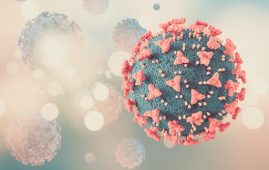

This article is about cochlear excitotoxicity (as requested by our editor-in-chief). This topic has recently become of interest to us in audiology because of its involvement in inner hair-cell synaptic damage (synaptopathy) caused by acoustic overstimulation. However, long before the focus on “hidden hearing loss” we have known that cochlear excitotoxicity is responsible for the degeneration of spiral ganglion neurons after inner hair-cell loss, and it also underlies peripheral tinnitus generation immediately following acute cochlear injury.
In brief, excitotoxicity is the degeneration or death of neurons when over-activated by excessive amounts of neurotransmitters. Excitotoxicity is largely confined to neural systems that use the neurotransmitter glutamate, and given that glutamate is the predominant excitatory transmitter in the brain, it is not surprising that many brain pathologies result from or are exacerbated by excitotoxicity. For example, it contributes to traumatic brain injury, epilepsy, stroke, spinal cord injury, and certain neurodegenerative diseases. In most cases, there is some initial insult that damages a localized population of neurons. These degenerating cells release large quantities of glutamate neurotransmitter that causes excessive over-activation and ultimately the death of neurons in surrounding tissue. In this way, excitotoxicity is typically a secondary event, but often causing more extensive brain damage than the initial insult.
The basic mechanisms of glutamate excitotoxicity have been well studied. Essentially, glutamate neurotransmitter is released from a neuron (or a hair cell) and activates certain types of glutamate receptors at adjacent neurons’ post-synaptic site. This initiates the opening of a limited number of ion channels in the cell membrane, resulting in the neuron’s depolarization (activation). During this process, minimal amounts of sodium, potassium, and calcium ions leak across the cell membrane. However, when damaged cells release abnormally high or long-lasting glutamate levels, large numbers of membrane ion channels open and remain open in the connecting neurons, and ions flood into the cell. In particular, the high level of calcium ion influx is more than homeostatic mechanisms of the cell can handle, and this most often leads to apoptosis (i.e., cell death).
Cochlear excitotoxicity can occur with various degrees of severity. Exposure to intense acoustic signals or direct trauma to the cochlea can damage inner hair cells, and then through excitotoxic effects, damage or kill spiral ganglion cells. The result can be a permanent hearing loss. During the period when spiral ganglion cells (a.k.a. cochlear afferent neurons) are over-excited and rapidly firing action potentials, there is a resulting subjective percept of tinnitus. This form of tinnitus lasts only as long as the excitotoxic events, which in time will reduce as the affected neurons die completely or perhaps recover. You may be interested in a rather unique experimental study by my research team at SickKids on the time-course of excitotoxicity induced by injury to the cochlea.
With acoustic overstimulation at levels that are too low to injure hair cells permanently, they can nevertheless damage the synapses of inner hair cells. This type of inner hair cell synaptopathy can cause permanent excitotoxic degeneration of spiral ganglion cells and the survival of inner hair cells. This is the basis for our current understanding of the cause of “hidden hearing loss.”
Given the importance of this pathological mechanism in contributing to hearing dysfunction (including tinnitus), interventions may become available to prevent excitotoxicity. For example, a very recent publication has described pharmacological treatments that might block or deactivate the cell membrane channels that allow massive calcium influx and cell death in excitotoxicity. This and other agents could offer protection against noise-induced cochlear injury (and the associated hearing loss).
Source link
more recommended stories
 Safer Allogeneic Stem Cell Transplants with Treg Therapy
Safer Allogeneic Stem Cell Transplants with Treg TherapyA new preclinical study from the.
 Autoimmune Disorders: ADA2 as a Therapeutic Target
Autoimmune Disorders: ADA2 as a Therapeutic TargetAdenosine deaminase 2 (ADA2) has emerged.
 Kaempferol: A Breakthrough in Allergy Management
Kaempferol: A Breakthrough in Allergy ManagementKaempferol, a dietary flavonoid found in.
 Early Milk Cereal Drinks May Spur Infant Weight Gain
Early Milk Cereal Drinks May Spur Infant Weight GainNew research published in Acta Paediatrica.
 TaVNS: A Breakthrough for Chronic Insomnia Treatment
TaVNS: A Breakthrough for Chronic Insomnia TreatmentA recent study conducted by the.
 First-of-Its-Kind Gene-Edited Pig Kidney: Towana’s New Life
First-of-Its-Kind Gene-Edited Pig Kidney: Towana’s New LifeSurgeons at NYU Langone Health have.
 Just-in-Time Training Improves Success & Patient Safety
Just-in-Time Training Improves Success & Patient SafetyA study published in The BMJ.
 ChatGPT Excels in Medical Summaries, Lacks Field-Specific Relevance
ChatGPT Excels in Medical Summaries, Lacks Field-Specific RelevanceIn a recent study published in.
 Study finds automated decision minimizes high-risk medicine combinations in ICU patients
Study finds automated decision minimizes high-risk medicine combinations in ICU patientsA multicenter study coordinated by Amsterdam.
 Study Discovers Connection Between Omicron Infection and Brain Structure Changes in Men
Study Discovers Connection Between Omicron Infection and Brain Structure Changes in MenA recent study in the JAMA.

Leave a Comment